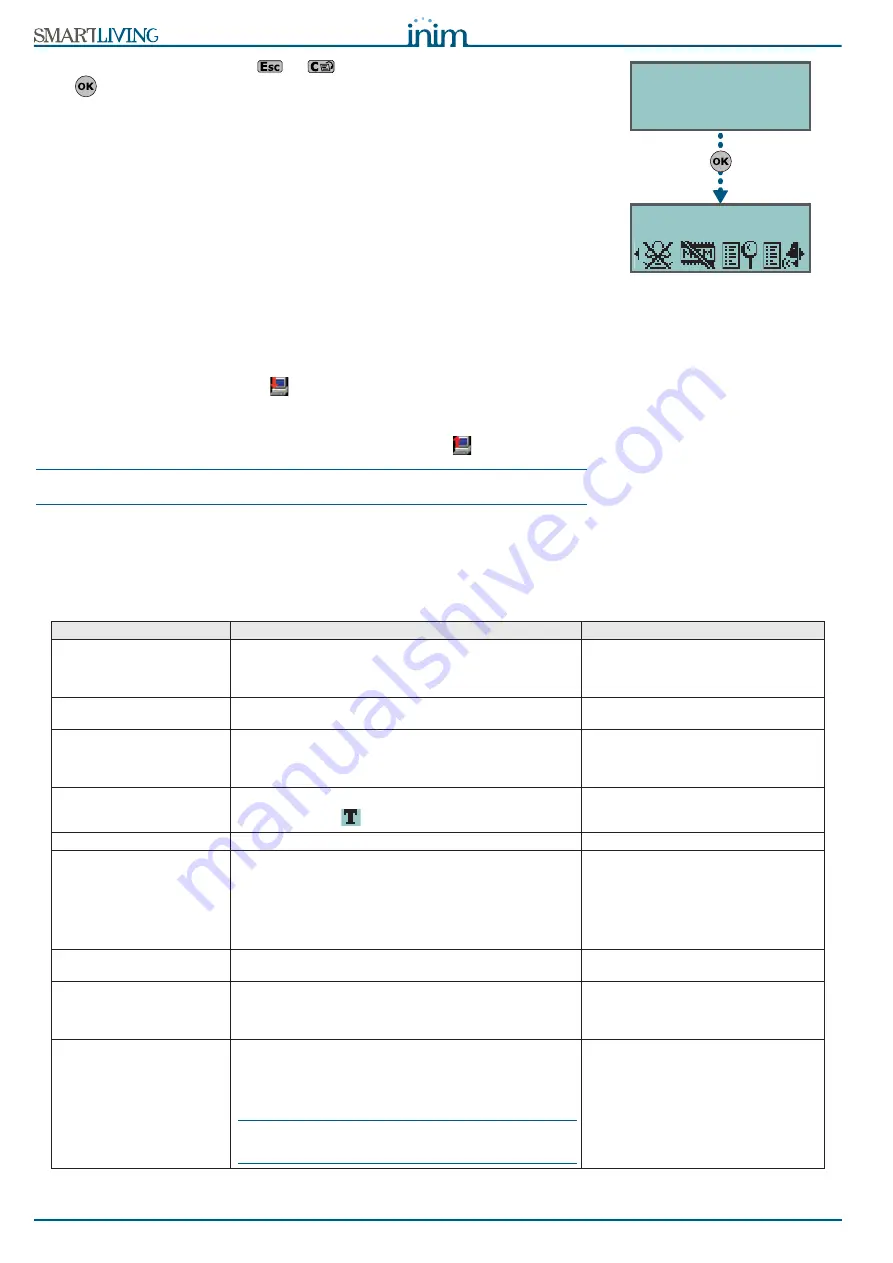
42
Options and programming methods
Installation and Programming Manual
To exit the installer menu, press
or
, and when the system asks: “EXIT?”
Press
(OK = YES).
When you exit the installer menu, the control panel will:
•
Apply all the new settings and values.
•
Restore the I-BUS, reprogramme and make all the peripherals fully
operational.
•
Restore the call queue, and events log to normal operations.
6-3
Programming via the
SmartLeague programme
Certain parameters (for example, relating to zones and outputs) can be
programmed only after the project layout of the system has been completed
(refer to paragraph
5-3 Creating a Project layout
).
1. Go to the “Recent solutions” section and either create a new solution or
open an existing solution, or import the programming data of a real con-
trol panel by clicking on the
key to upload the control panel data.
2. Select the device you wish to configure from the tree menu on the left.
3. Set the parameters in the “Parameters settings” template on the right.
4. To download the data to the control panel, click-on the
key.
Note
The limitations described in paragraph
5-3 Creating a Project layout
apply during
the uploading and downloading phases.
6-4
Panel options
The following options are provided by the control panel.
EXIT? OK = YES
18:23 30/10/2011
DASIDASI--
Table 31:
Panel options
Option
If enabled
If disabled
Dial tone check
The control panel will engage the telephone line and check for
the “dial tone”, if present, the control panel will start dialing.
The control panel will engage the
telephone line, wait two seconds then will
start dialing (whether the dial tone is
present or not).
Pulse dialing
The control panel will dial using pulse tone.
The control panel will dial using touch tone
(DTMF).
DTMF withoutCode
Allows access to the User Menu over-the-phone (during voice
calls from the control panel) in accordance with the access
level (enabled options, etc.) of the last user code that operated
on the control panel (code 30, 50 or 100).
Allows access to the User Menu over-the-
phone during voice calls from the control
panel, only after entry of a valid user-code
PIN by the recipient.
Line down signal
If a “Tel.Line down” event occurs, the control panel will flash
the respective icon
on the keypad displays.
The control panel will detect the “Tel.Line
down” event, but it will not be revealed on
the keypad displays.
Double call
The control panel will override the answerphone function.
Call allVoxNums
If several voice calls - generated by the same event - are
waiting in the outgoing call queue, the control panel will
attempt to send voice calls to all the numbers.
If several voice calls - generated by the
same event - are waiting in the outgoing
Call Queue, the control panel will attempt
to send voice calls until just one call ends
successfully. Any other voice calls relating
to the event in question will be cleared
(deleted) automatically from the queue .
Call all TLVNums
The same as
Call all VoxNums
, but related to Alarm
Receiving Centres.
RefreshMnstblOut
Each event that triggers an already-activated monostable
output will refresh (take back to zero) the programmed
Monostable time.
Each event that triggers an already-
activated monostable output will not
refresh (take back to zero) the
programmed Monostable time.
Num10 ForTeleserv
Telephone number 10 in the phonebook is reserved for
Teleservice (maintenance over-the-phone). If an end-user
makes a request for Teleservice, the control panel will contact
the number in position 10.
Note
If you wish the control panel to call an installer company
number which uses an INIM modem, you must set “None” in
the Telephone Number Type field.
Telephone number 10 in the phonebook
can be dedicated to either voice or
Teleservice.






























